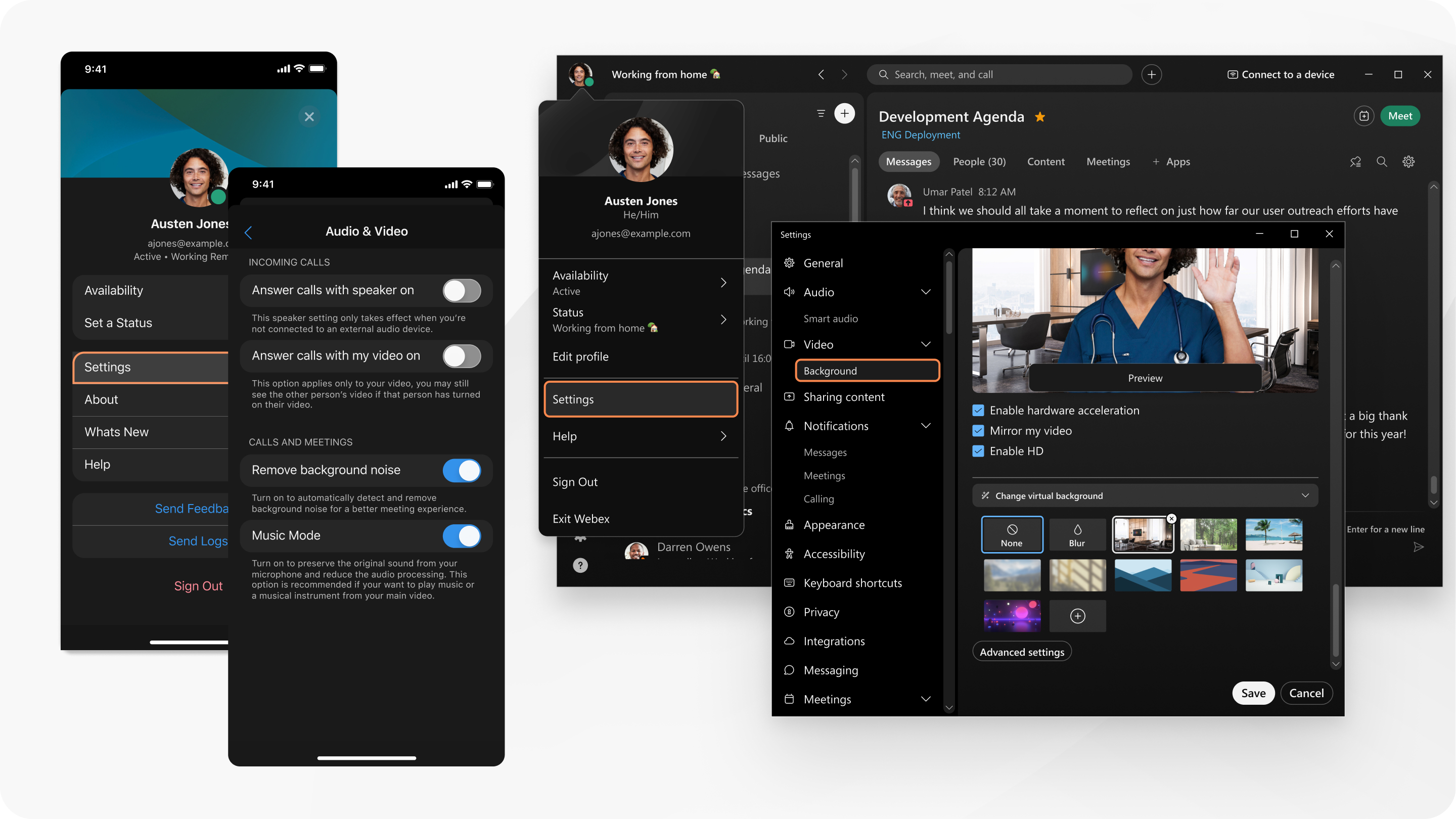When you have multiple cameras, select the default to use for your meetings. Virtual camera software, external webcams, and Webex App Room or Desk devices can be selected just like a built-in webcam. On mobile, you can switch between front and back-facing cameras and set virtual backgrounds.
| 1 |
When you're not in a meeting, click Settings
When you're in a meeting, hover over your self-view video, click . |
| 2 |
Choose the camera you'd like to use from the Camera drop-down list. |
| 3 |
(Optional) Turn off mirror view for your self-view video. |
| 4 |
(Optional) Fit your camera video in self-view. |
| 5 |
(Optional) Turn on hardware acceleration if you're having CPU issues when you're on a call or in a meeting. |
| 6 |
(Optional) Adjust the brightness and contrast of your video. |
| 7 |
(Optional) Set the resolution of your camera. |
| 8 |
(Optional) Change your self-view location. |
| 9 |
(Optional) Turn off GPU acceleration for virtual backgrounds. |
| 10 |
(Optional) Under Video, click Background to use a virtual or blurred background in calls and meetings. |
| 11 |
Click Save. |
| 1 |
When you're not in a meeting, click Settings
When you're in a meeting, hover over your self-view video, click . | ||
| 2 |
Choose the camera you'd like to use from the Camera drop-down list.
| ||
| 3 |
(Optional) Turn off mirror view for your self-view video. | ||
| 4 |
(Optional) Fit your camera video in self-view. | ||
| 5 |
(Optional) Turn on hardware acceleration if you're having CPU issues when you're on a call or in a meeting. | ||
| 6 |
(Optional) Adjust the brightness and contrast of your video. | ||
| 7 |
(Optional) Set the resolution of your camera. | ||
| 8 |
(Optional) Change your self-view location. | ||
| 9 |
(Optional) Under Video, click Background to use a virtual or blurred background in calls and meetings. | ||
| 10 |
Click Save. |
| 1 |
While in a call or meeting, tap Video |
| 2 |
(Optional) Android only: Turn off high definition video. |
| 3 |
(Optional) Use a virtual or blurred background in calls and meetings. |
You must be using Chrome, Safari, or Firefox.
|
Click the activity menu |

 in the navigation sidebar, and then click
in the navigation sidebar, and then click 

 and choose
and choose  .
.
